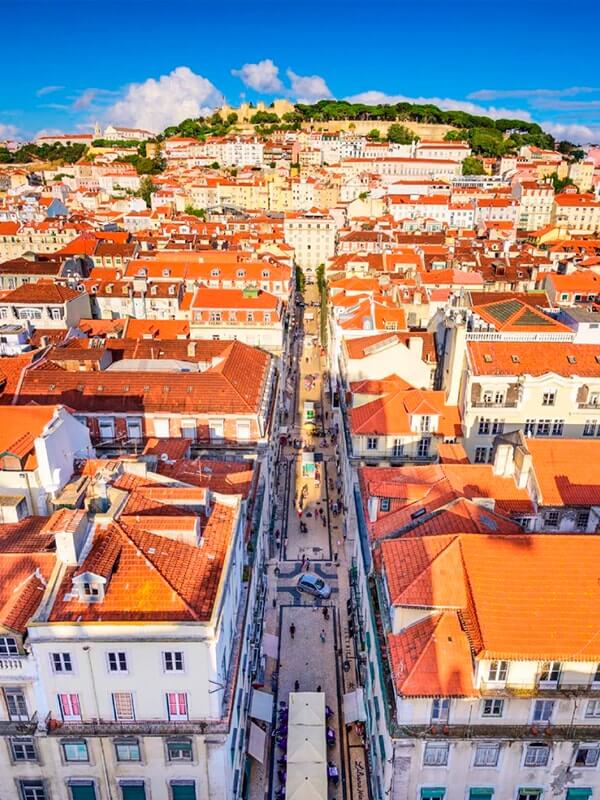
Lisbon & the Algarve: the sights, the history, the wine and the food

This article is an abbreviated version of the original. To read the full article, click here.
Hurtling around Portugal’s capital city on a tuk tuk tour gives you a real sense of the grand colonial history of the place and the stark contrast. There are beautifully restored old relics commemorating the Portuguese age of discovery dotted all over Lisbon. There are maritime museums, monasteries and restored naval yards which remind you of where these people came from.
Our rickety petrol-powered tuk-tuk grinds to a halt outside the Jeronimos Monastery in the Belem region of Lisbon where our guide hops out and explains the significance of the site. It is a grandiose structure built on the banks of the Tagus river at the end of the 15th century and has throngs of tourists queuing up to get a glance inside.
The Maritime Museum is located in the west wing of the monastery – a Unesco world heritage site – and is a really good lesson in the naval history of the place. There are scale models of ships from the 1600s as well as a wooden figure of Archangel Raphael that accompanied Vasco da Gama on his voyage to India. There are ceremonial barges from the 18th century and replica 16th century maps showing the world as it was thought to be then.
But never mind all that, more importantly, it was here in the Jeronimos Monastery that the delicious pasteis de nata originated – a custard-filled pastry which the monks used to make with leftover egg yolks. Pasteis de Belem is a bakery beside the monastery which traces its origins back to the 1800s when monks began selling their pastries there.
Another delicacy to be savoured here is the seafood – crab sold by the pound, octopus in salads and calamari without the rubberiness. The Portuguese like to take their time over food; several small portions are shared between the table and there is always an accompanying glass of wine. You don’t have to spend a fortune to eat like a king here, though. Time Out has a fresh food market at Mercado de Ribeira where you can try local specialities from some of the finest food outlets in town, including pasteis de nata.
If, however, you’re looking to expand your trip further afield than the Portuguese capital, the Algarve is only a three-hour drive away. We combined the two as part of one trip which gave a lovely balance of city buzz and seaside rest. Carvoeiro is a tiny little town which hugs the cliffside coast of the Algarve. It is about a 50-minute drive from Faro airport and offers a much more laid-back vibe than other stag-filled Algarve resorts.
We took a walking tour across the Seven Hanging Valleys, a 5km signposted route that runs across the cliffs from Centeanes to Marinha beach. It passes the Alfanzina lighthouse and Benagil beach, home to the photogenic Benagil sea caves, which are really worth a trip out to in their own right. The Benagil sea caves are worth a trip out to see.
Lisbon is full of history, heritage and art while the Algarve offers a peace like no other – you just have to seek it out.
